Novi Bečej, Arača and Novo Miloševo (Part 1)
Only cranes know where Arača is
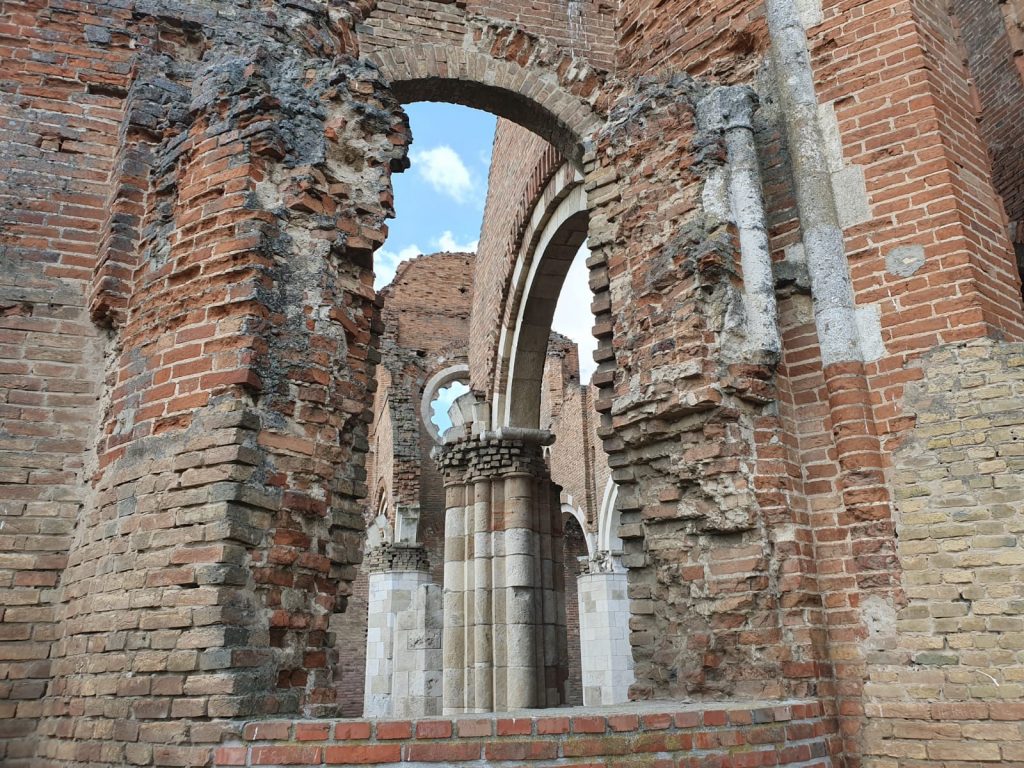
“Finally, we are in the flatlands of Banat,” I tell my colleague who agreed to cycle with me from Novi Bečej to Novo Miloševo and back. A couple of weeks earlier, we fought with the “bumpy” Srem at plus 35 degrees Celsius, and after that, we travelled through the Banat plain at a temperature of a pleasant 25 degrees and a subtle tailwind which seemed like pure enjoyment. However, a couple of hours later, when we were returning from Novo Miloševo, the headwind in the plains slowed us down so much that we felt as if we were climbing Fruška Gora.
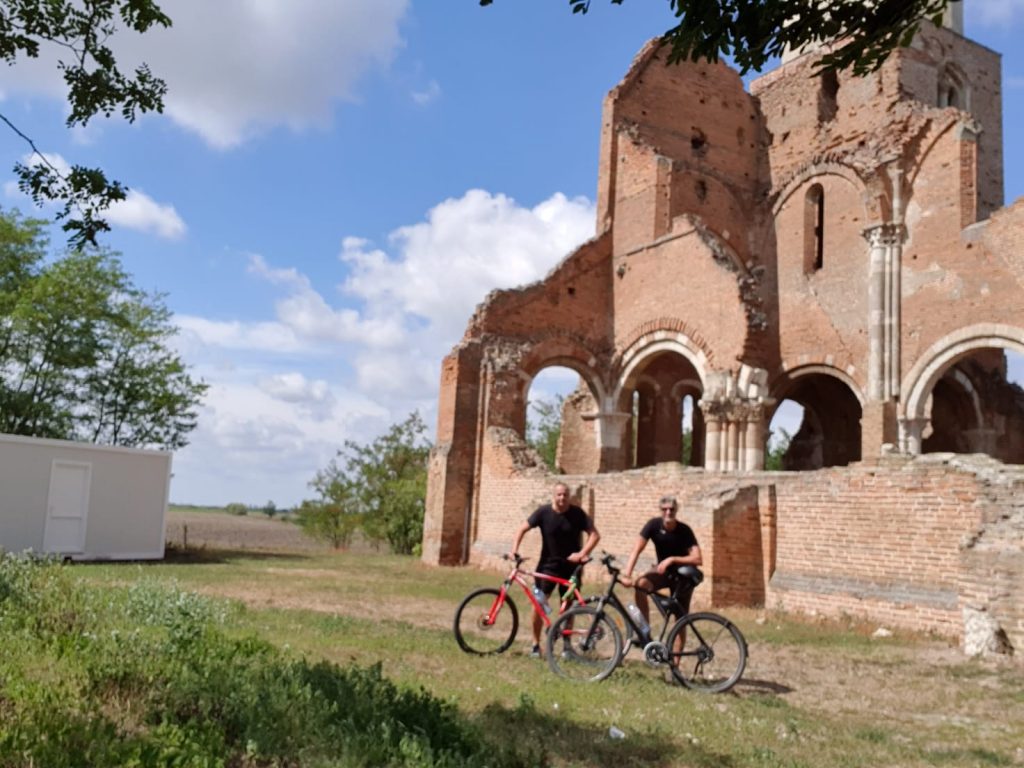
This time around, we start our cycling adventure on the quay near the Tisa River in Novi Bečej which is so beautifully done that it resembles a perfectly maintained Second World War monument in a Soviet republic, which unfortunately is a rare sight in this part of the world. They say that the quay is exceptionally beautiful during the period known as “The Tisa blooming” which happens in June and on Our Lady Day in late August. At the bus stop in front of the school, I notice a motif from a painting by Piet Mondrian. The town is beautiful, but when you start wandering around smaller streets, you see a lot of abandoned houses, which has become so typical of Vojvodina. A sign at the entrance to Novi Bečej cites 1901, the year when the town was founded. I am afraid that, if the current situation persists, very few inhabitants here will be alive for the millennium jubilee.
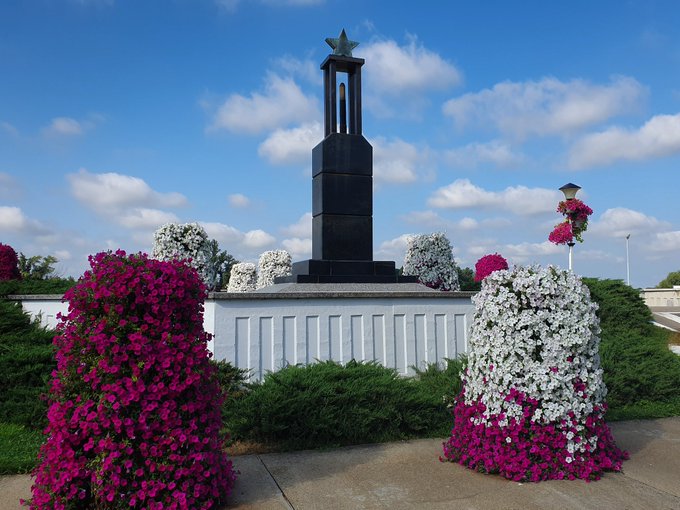
The Hungarians call Novi Bečej Törökbecse (or Turkish Bečej, because Banat was a whole century longer under the Turkish rule compared to the neighbouring Bačka). Since 1946, Novi Bečej has been called Vološinovo, after a USSR marshal who died during the liberation of the town, and in 1952, it regained its old name – Novi Bečej. Orthodox and Catholic churches here are nicely decorated and are packed with churchgoers even though it is a working day. The ornaments on the facade of the impressive Art Nouveau building that houses the Town Hall are deteriorating due to dampness.
On our way to Novo Miloševo, we pass a cemetery which entrance is dominated by a chapel, the endowment of Milanko Stanković, also suffering from dampness-related damage. The chapel reminded me of 16th-century Portuguese churches, grey from tropical moisture, that I saw in Old Goa in India.
Near the town exit, we come across two more sad examples of neglected cultural and architectural heritage. Less than 30 metres away, there is a house, dating back from the turn of the century, which left facade is intact but neglected, while the right segment, which is occupied by tenants, has plastic peeling off the facade and installed PVC windows with shutters. A couple of houses down the road, there is a mill from the same period which is being demolished, certainly a valuable example of industrial architectural heritage that is disappearing in front of excavators and due to the negligence of the people who were supposed to protect it.
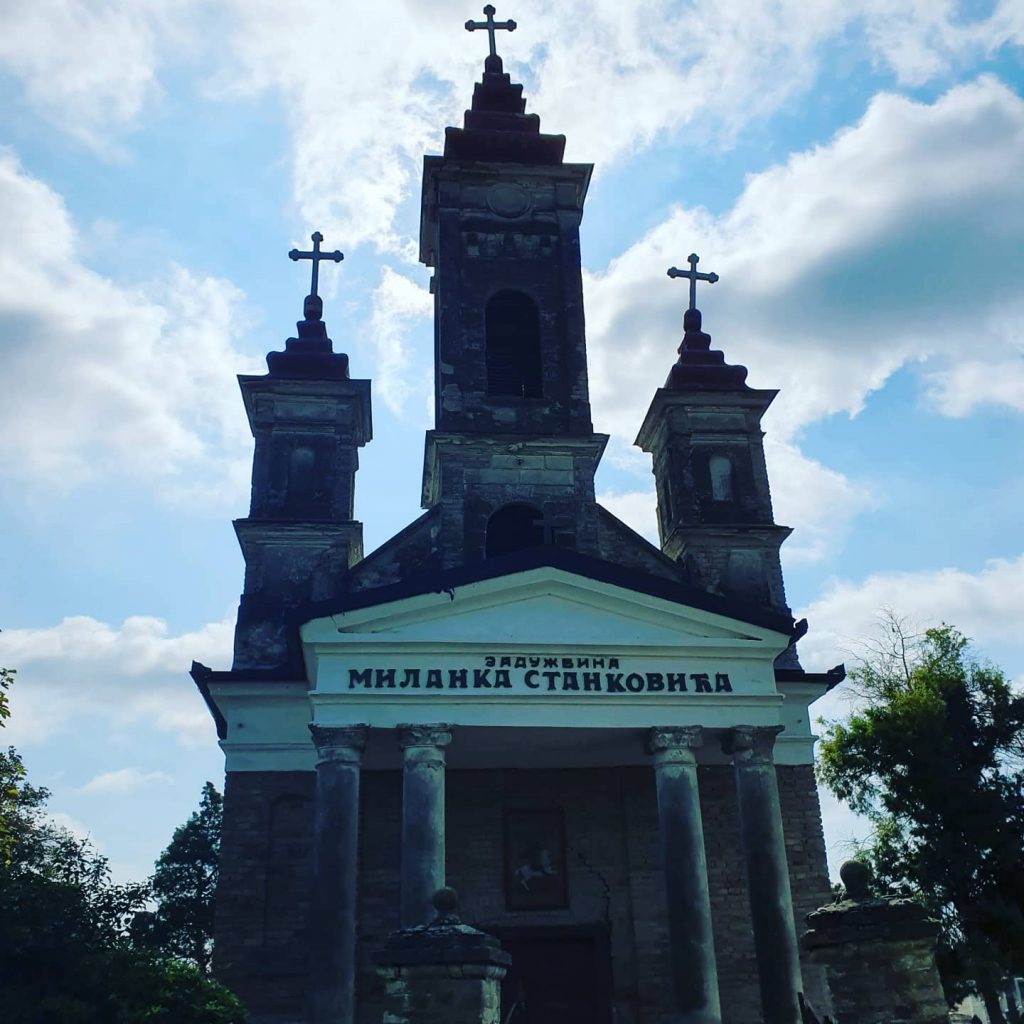
We are continuing to head north, in the direction of Novo Miloševo, and we come across Slano Kopovo, one of the last preserved salt marshes in Serbia. Slano Kopovo is a unique Pannonian habitat that is characterized by salty muddy ponds and occasionally becomes a lake that dries up during the summer season. When we arrived, it was completely dry, cows were grazing in the distance and we were accompanied by a stray white shepherd dog.
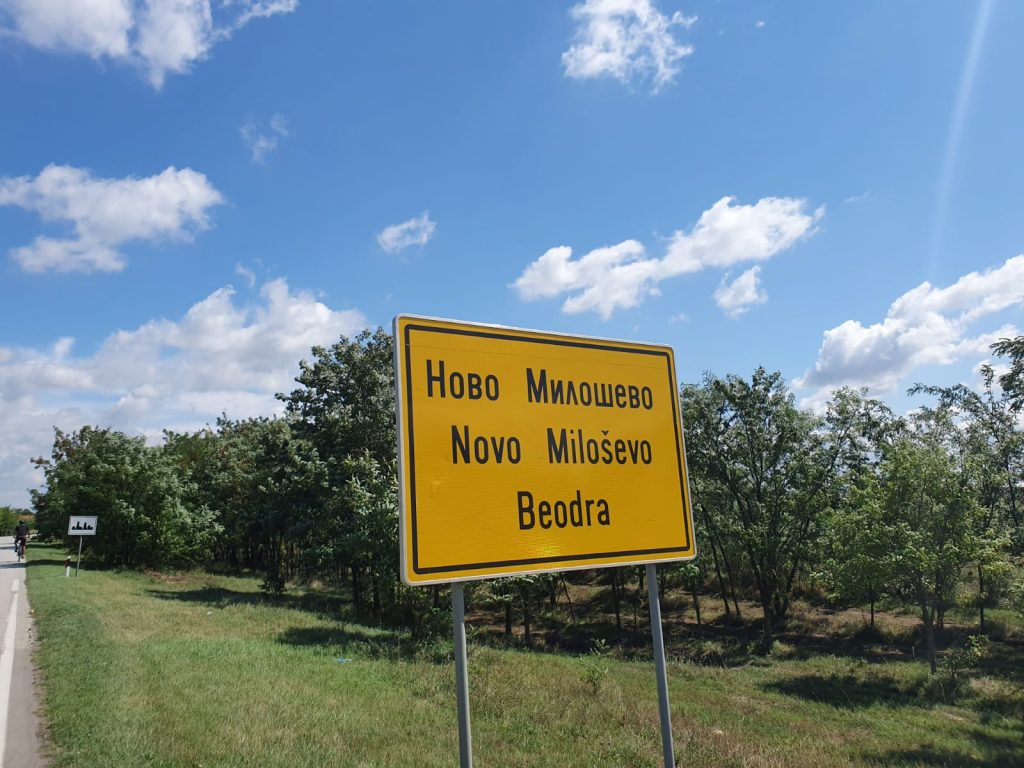
The well-marked info-board on the main road says that up 20,000 cranes land in Slano Kopovo in the autumn during the bird migration season.
A well-made motorway segment runs along a rail track, which is being overhauled along its entire length. What confuses us are the old rails and sills, which are just thrown down on the side next to the new rail track. I believe that they will be removed at certain point, but it all looks pretty ugly and easy prey to people collecting used metals.
At a certain point, our GPS shows that we should turn right to a dirt road, in the direction of Arača, a 13th-century basilica that lies forgotten at the heart of the Banat plains. However, there is no sign on the main road, not even the smallest one, that would direct a casual traveller who does not have the Internet or GPS, to one of the biggest cultural, historical and tourist attractions of Banat and the whole of Vojvodina. People say that in winter, Arača can be seen in the distance from the main road, but when maize grows very high, it swallows the site of the church in the background.
After riding on a bumpy road for 15 minutes, we arrive at what is left of Arača.
Arača was built around 1230 on the foundations of an older church from the 11th century. It was looted and destroyed during the Cuman invasion in 1280, and rebuilt in 1370 by order of Queen Jelisaveta Kotromanjić of Anjou. During the renovation, a Gothic tower was added, the remains of which still exist today. The sign next to the church, which is covered by video surveillance powered by solar batteries, says that the Ministry of Culture of the Republic of Serbia, the Secretariat for Culture of Vojvodina, the Municipality of Novi Bečej and the National Council of the Hungarian minority are in charge of its conservation. I believe that at least some of them will come up with an idea to put up a sign on the main road so that tourists know in which direction to turn to get to Arača.
We soon come across the sign that we are entering Novo Miloševo/Beodra, one of the biggest villages in Vojvodina which, back in the day, had the population of over 10,000 while today it is less than a half of that.
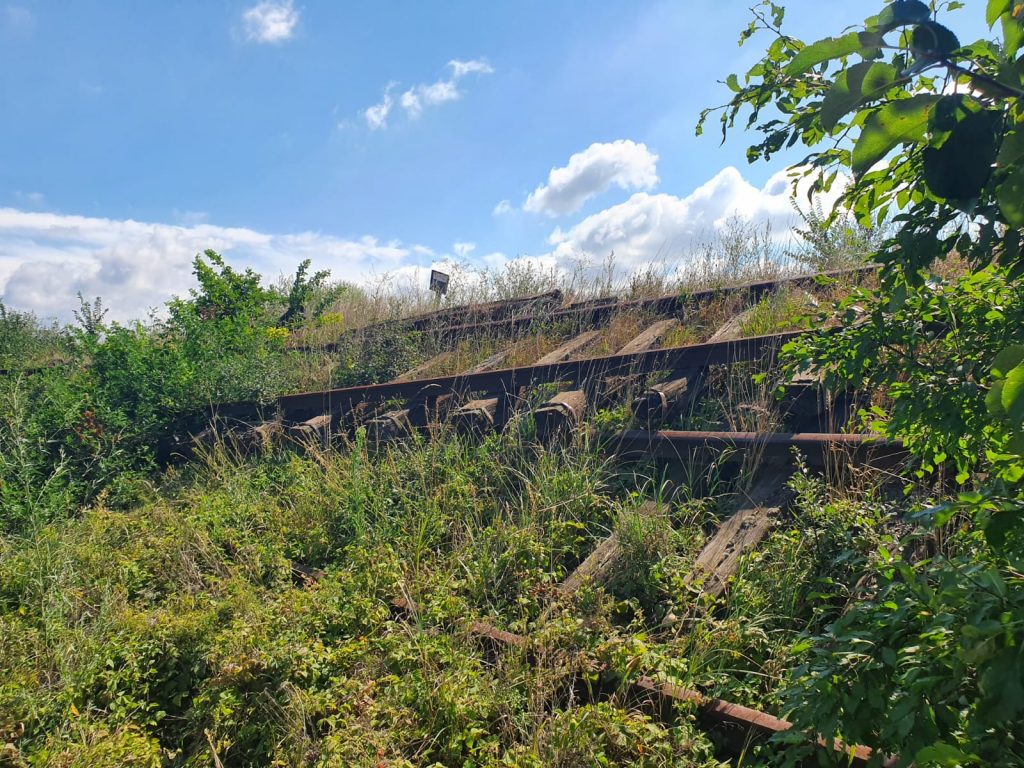
To the left of the sign, a shepherd is tending to sheep and to the right, a man is directing a herd of cows. A large factory hall with silos around it stands out. They bear the letters “JSO” (an acronym for a notorious special police unit). By the way, the company, despite what the local conspiracy theorists drinking beer in front of the village kiosk say, the letters “JSO” have nothing to do with the former Special Operations Unit. They mark a production plant in which various pumpkin-seed products are made.
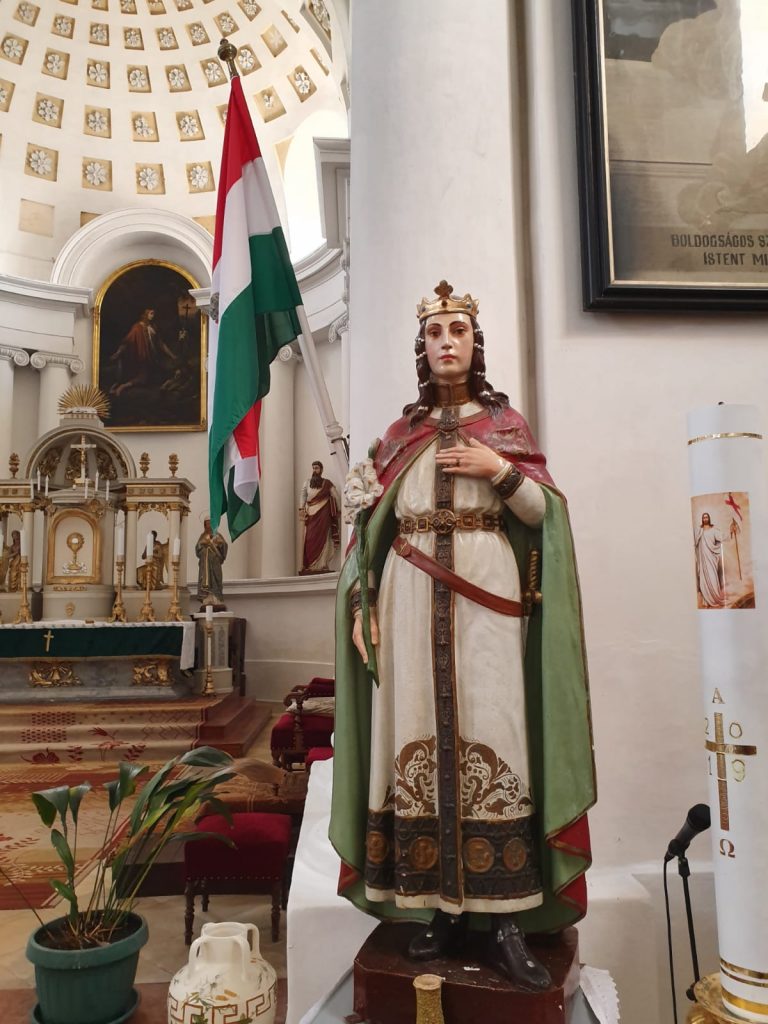
An impressive yellow-painted church with two towers dominates the site at the entrance to the village on the right. The Catholic Church of St. Magdalene in Beodra, the former name of Novo Miloševo, was built in 1841. Brothers Laszlo and Lajos Karácsonyi, big local landowners, financed the construction of the church. Later, they were both buried in the family tomb, in the church’s crypt. This church is one of the largest in the area and the only Catholic church in this part of Banat with two towers. Locals say that the brothers wanted to have each their own tower. In addition to church relics, the church is adorned in Hungarian national flags, which is common in most Catholic and Protestant churches in Vojvodina, where the majority of churchgoers are Hungarians. The pastor comes out and greets us in Hungarian and then immediately switches to Serbian. He tells us how there used to be another castle at the entrance to the village, which was even bigger and more beautiful and was allegedly connected by underground lagoons. We are interrupted by two locals who come to speak with the pastor about the baptism of a child. They speak a nice variant of Vojvodina’s Hungarian, which includes some Serbian words whose Hungarian versions the two locals cannot immediately remember, such as “ID card”.
We are now pretty hungry and in search of burek. It’s noon and the only bakery in the main street has already sold out their entire serving of burek for that day so the lady working there tells us of another bakery, near the outdoor market. Finally, we found burek there and have a few pieces with customary yoghurt in a cup.
Now, we are ready for the main adventure that is jumping over the fence and entering the deserted Karácsonyi castle.
(To be continued…)
By Robert Čoban